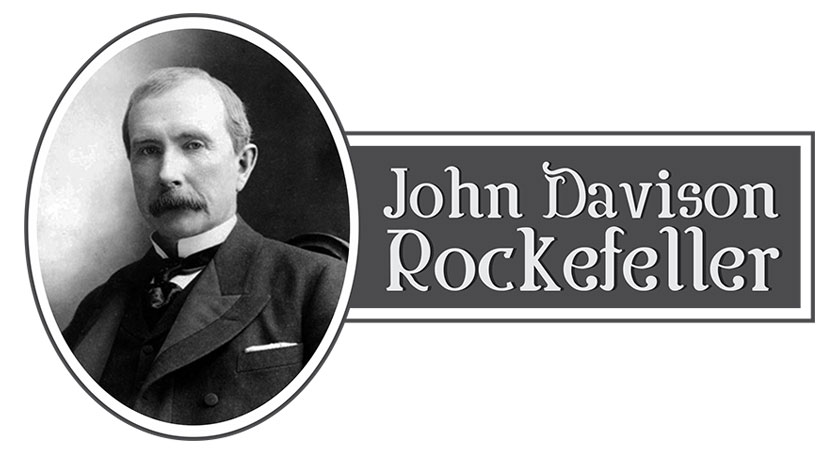

The fluttering crisp bank notes and shiny metal coins speak the same language, universally! Undeniably, money is an antidote of poverty and economic slump. However, it is hard to narrow down as to why there is an acute lust for abundant money? Is it the power that it brings along or simply for its lineament of materialistic gratification.
Last couple of decades has added many new set of words in our common vocabulary like recession, inflation, layoffs, inside trading, economic bubble etcetera. Though depressing, it is a savage reality staring back at us viciously. Corporate greed, shabby ethical code of conduct and political and crime nexus are rampant in world business arena. Such business practices are an eternal enigma for economic pundits and policy makers around the globe!
To curtail the economic decline, international watchdogs of Commerce & Trade are in constant vigil to pull out the evil from its scruff, but it is an endless pursuit.
Today, price fluctuations, trade policies, profit and loss statements decide the fate of corporate giants. In this fierce cutthroat competition, business units and individuals try their evil best to outdo each other. In the medieval era lust for wealth and power ensued war! In the early 20th century, the nations clashed for strategic dominance and by the end of the millennium, nations entered into war for fossil fuels. No other commodity in the history of humankind and global trade has ever been so precious than crude oil. The greed of ‘black gold’ has brought down governments, led foreign invasions and today it plays a key role in the world economy.
The following chronicle is not to preach you about how the world is infested with corruption, nor is it a deplorable saga of low morals and poor business ethics. The single point agenda of this story is to take you beyond materialistic reality of commerce, into the world where strong willed individuals like John D. Rockefeller build business empires.
John D. Rockefeller was world’s first billionaire and the United States most hated oil tycoon in the history of business.
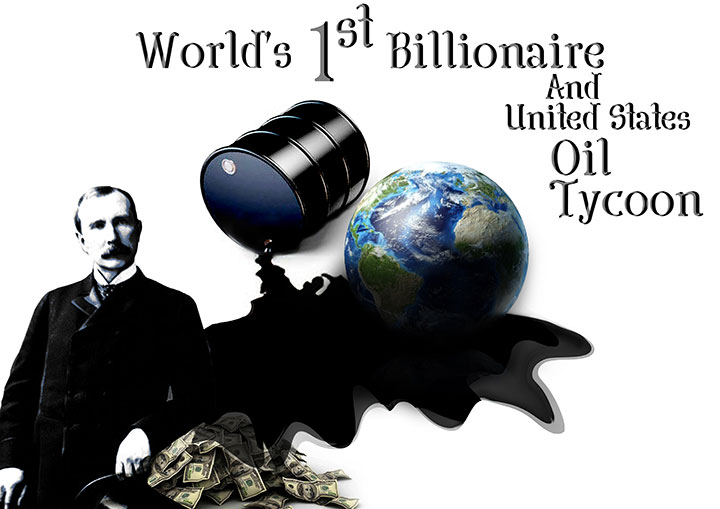
How he attained both the titles is carefully retraced in this saga and you are free to call it a Business Biography or a Business History, because this is where it all began!

The story of this elusive figure begins in 1835 in Richford, America. It was a small town of foreign settlers with nascent industries, sawmills and whiskey distillery. The puritan English settlers gave Richford its first school and church. William Avery Rockefeller, a vagabond, a self-proclaimed doctor, a cheap novelty salesman, and an expert marksman came to Richford in 1835. A schemer and a fraud by existence, William or Bill as he was called, pretended to be a deaf and dumb salesman. He hung a board around his neck reading “I am Deaf and Dumb” to gain sympathy from the neighbours and to flush out town secrets. In reality, standing 6 feet tall with broad shoulders, William possessed hypnotic voice and twinkling eyes and he used his charming personality to camouflage his treachery and fraudulent schemes. He had earned himself the name of “Big Bill” for his towering stature and boastful antics. Bill charmed his way into Eliza Davison’s life, the daughter of an affluent businessman living in the outskirts of town. Unaware of Bill’s fake chivalry, Eliza lost her heart to the devil. After months of courtship, the couple read their vows in the Baptist Church, against Mr. Davison’s [Eliza’s father] approval on 18th February, 1837. The drama unfolded soon after the couple moved into a shabby house, built by William on a steep hill. Eliza discovered Bill’s fraudulent life and a hugger-mugger affair with a housemaid named Nancy Brown. Deeply hurt but her husband’s debauchery, Eliza, now a few months pregnant, could not walk away from Bill’s life due to concerns about her father's illustrious status in the society. The couple had their first child Lucy in 1838. A year later, on 8th July, 1839, John D. Rockefeller was born. He also had a sister and two young brothers William and Frank.
It is cruelly ironical that John grew up under the shadow of a scoundrel father – Big Bill. He bore a girl child Clorinda with Nancy Brown few months after John’s birth. Two years later the maid gave birth to another girl child, Cornelia in 1840. Eliza and Nancy both bearing children from Bill lived under the same hood. It would have been immensely painful for Eliza, but the much matured wife felt sorry for the poor maid and bore a deep concern for her children too. Woefully, John grew up with his childhood crushed between his blood siblings and illegitimate sisters. As if the debauchery was not enough, the immoral Bill often left his family in the middle of the night only to return a few months later, with a minuscule bounty garnered through treachery. Financially, the family was way beyond broke; thankfully honey-tongued Bill arranged for Eliza to buy goods from the general store on credit, which he paid off entirely after returning from his desperado stints.
In the absence of a father, Eliza took up the initiative to teach her children the lesson of life, religion, academics and morals. She inculcated in her tiny tots the strength to restrain their needs and sinful thoughts by praying to god.
John was 3 years old when the family moved to Moravia, a sedate community with neat farmhouses and open air scenery. The house was small but Eliza was happy to move from a backward settlement to a town which had more churches. Soon after settling in the new town, the schemer [Bill] once again deserted his family without warning, only to return back like a prince, riding a horse, clad in pretty clothes and pockets filled with crisp bank notes. He flaunted his wealth by settling grocery store and taking his family to extravagant dinners once in months. To neighbours, his profession always remained shadowy; some accused him of being a horse thief, while some called him a gambler. In reality, he was a self-proclaimed doctor who sold fake medicines under the pretext that it cured cancer. Big Bill often boasted about his adventures on his return, but seldom showed interest in his children who looked hungry, neglected and dirty, clad in tattered clothes.
Bill was habitually frittering around while Eliza lived a nightmarish life. Bearing the responsibilities alone, she strongly held her ground. Not only did she take care of her children, but also looked after the family’s 60-acre farm. Eliza was a strong willed woman who drew strength from her adversity. Never did she showcase her anger or true emotion in the presence of others. Eliza possessed a saint like calm with soothing polite voice. Only the thought of credit being denied at the general store made the helpless mother squeamish. Eliza was instrumental in John’s strong willed nature and calm demeanour.
In the year 1840, the district of Moravia was gradually expanding; the economic activity was in a nascent stage. The upcoming local banks, railroads, telegraph and steamboat transport system attracted many men of affairs to set out their ventures. Sighting an opportunity in his hometown, Bill returned this time with a stash of cash and paramount confidence. The locals, who were not yet acquainted with the Big Bill, thought of him very highly. John, an innate observer, noticed the way his father entertained and charmed his guests. Bill was a stickler and a born salesman. He was a go-getter and had a tendency to inspire people to follow him without dubiousness’s. With a sudden twist of luck, the Rockefeller family moved into a new house, bigger than before, with a beautiful blue lake in the backdrop. Bill’s prodigal spending gave people an impression that the Rockefellers were filthy rich. Bill employed his newly acquired social status by forming a lumber business; he even created a one room schoolhouse in the neighbourhood and participated zealously in community welfare. A notable man in the society, Bill never believed in dirtying his hands by enduring laborious job. Day in and day out, the observant John kept on learning from his father the ‘art-of-dealing-people’.

At the age of 7, John was enrolled in the community schoolhouse built by his father. He was never an easy student and lacked enthusiasm of scoring grades. However, he showed great temperament for numbers.

Quite early on John realized the importance of money, witnessing his father using it to his full advantage against tail wagging lumbermen. For him money became synonym to power and he ardently desired to attain it!
John’s first business venture as a child was buying a candy bar, breaking it into three equal pieces and selling them to his siblings at a respectable profit.
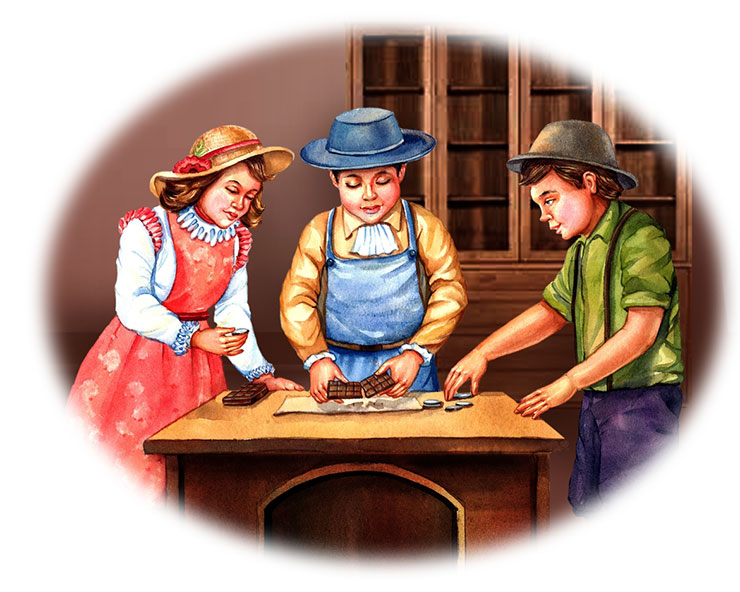
John’s next venture turned more lucrative when he raised a turkey in his backyard and sold its eggs in the market. At such a small age the little entrepreneur was bringing home gold, silver and bronze coins. The tycoons of the Gilded Age stated that “Business has no room for emotions” and this was naturally embedded in John’s mental make-up. He was a placid boy by nature and always seemed lost in his thoughts. Not an outstanding personality either, he looked grim, expressionless and lacked boyish joy and animation.
At school John was a slow learner but persistent. Dismissive to books, John was inclined towards playing strategy games like chess and checkers; he displayed tremendous patience and analytical skills and played only to win! However, a serious child by nature, John had a quick-wit sense of humour and would often engage himself in naughty pranks, which he mostly played on his siblings with a straight poker face.
Back in the days, the rural schools closed for 30 weeks in a year as the boys were required to work on their respected farms. School was an escape for John from his miserable life. Nevertheless, during school break he would be back amidst his broken family. John would take his mind off by helping his mother with household chores and budgeting. Eliza ensured that John attended Sunday masses at the church, which he did without any obligation or nagging force. He felt soothing comfort at church and a connection with the celestial soul. Devoted to the almighty, John became a regular at church and never missed his prayers. Bill, though an imposter, still urged his son to visit the church. Maybe deep inside he wanted his son to walk the path of righteousness. Whatever his intentions maybe, he inspired his son further by announcing a $5 prize money for reading the bible from cover to cover.
In John’s tender mind, this reward system created an unintentional association between god and money. John’s future ventures were predominantly inspired by his service to god, for which he believed he was blessed in the form of money. Baptism and adopting puritan values shaped up John’s strong willed character. Baptism narrowed his social life but it broadened his vision and spirituality. Eliza wanted her children deprived to grow up in a disciplined sinless environment and therefore they were abstained from dancing, visiting theaters and reading unholy books or magazines. Authoritarian Eliza groomed John to become a man his father never was and the obedient son took his mother's words as Gospel.

Every year in winter the sparkling blue lake behind the Rockefellers humble abode froze. Eliza never allowed her children to play on the frozen lake fearing them of catching a cold, falling in crack or simply slipping on hard ice and breaking bones or teeth. One night John saw a boy skating on the ice falling into a cracked surface; the water was harshly cold and would have stopped the blood circulation. Without delaying further, John, along with his kid brother William came to the boy’s rescue. The brothers became overnight heroes in the neighbourhood, but at home, after a small appreciation and a pat on the back, Eliza administered beating for breaking her laws.
In Bill’s absence, John had to fill his shoes, a surmountable task which he had to abide. Eliza depended on her doting son for every trivial and crucial matters and yielded many responsibilities to him. She entrusted his judgment and often sought his advice when taking financial decisions. By 10 John was very mature than his age and took care of his siblings. He was their saviour and played a crucial part in keeping his family values together. Like his mother, he never evidenced anger or raised his voice and carried his understated authority with remarkable ease and silence. John was close to his mother and considered her punishment as indispensable lessons of life. He learnt great values and worldly knowledge of economics, thrift and orderly management from his mother.
The miniature adult burdened with duties seldom engaged in playful activities like his younger brothers William and Franklin. On the outset John portrayed himself as an adult, but deep inside he too was a kid, who craved for normal life and affection of his father. Incognizant of Bill’s devious nature and fraudulent lifestyle, John idolized his father. For him, Big- Bill was bigger than “Paul Bungan” (An American Folklore Giant) who could do remarkable feats with an ease. Children associated Eliza with discipline and Bill with fun, laughter and good times. Though Bill was not an ideal father, yet, he was an undistinguishable pedagog of business trade. From very early on he trained his sons about bargaining, business tactics, ethics, negotiations and importance of contracts.
Big Bill was notorious for flaunting huge sums of cash in the company of others. He distrusted banks and stashed his money and gold at home. What John thought, said and felt came from his mother, but what he did was inspired from his father. John worshipped his father for his money making attributes, but his image was shattered once and for all when Big Bill was accused of a raping a young house help. Big Bill’s reputation was tarnished and the local townsmen nicknamed him the “Devil- Bill!”
As luck would have it there was no police investigation or court trials, but the constant gossip running loose around the town, made it difficult for the Rockefellers to continue in Moravia. Down at heels the family moved to Owega, a town more affluent than the previous. Undeterred by the incident, Devil-Bill bold as brass, resumed his forgery schemes in the new town. He taught John a very valuable lesson of life - to never trust anyone, not even his own father. To prove his point he asked John to climb a high table and jump off it promising that he would be there to catch him.

A confident John jumped, but alas, Bill was not there. John landed hard on the floor injuring his knee. Though painful, it was a well-learnt lesson!

In the year 1852, the children were enrolled in Owega Academy. 14 year old John displayed potent Math skills and mastered English comprehensions and business communication. His essays on economics and capitalism reflected his innermost desire to attain success.
The Rockefellers were adapting in the new town when once again Big Bill resorted to his vagabond modus-vivendi. He dumped his family to Eliza’s sister Sara Ann’s home and gave a pitiful $300 for his clans boarding and other expenses for the year. A year later, he resurfaced in their life, and this time more affluent than ever before.
In 1854, The Rockefellers once again migrated to a new bustling town of “Strong Ville”. John and William resumed their education at the Cleveland Central High School. 15 year old John who was pretty sure of his father's malicious vocation, now distanced himself from Devil-Bill.
Self reliant and surefooted John moved out from his home and boarded at “Mrs. Woodin” home for $1 a week. He continued his schooling and excelled in debate and mathematics. At school, John had earned a reputation of being “Money Mad” as he was the only teenager in the town to have a bank account. Penny-pinch John maintained a ledger, in which he noted down every minute details of his daily expenses. Childhood lessons of thrift taught by Eliza now came into practice.
John befriended students Mark Hanna and Darwin Jones who came from a well-to-do family, shared his ideologies, and refrained from twaddle. Apart from academics and numbers, John was equally gifted in music and he practiced piano for 5-6 hours daily. John would be lost in world of euphony when he ran his fingers on the piano keys. He was a regular at the church and whenever he could, he would offer some money for the charity. His philanthropy was an escape from the pain his father induced in his life.
Away from the family, the Devil-Bill was living under a false identity of “Dr. Livingston” in Ontario, Canada. The 42-year-old schemer had seduced a 17-year-old Margaret Allen, daughter of a wealthy businessman. Securing his interests in Canada, Devil-Bill returned to Cleveland for performing his final rites of a husband and father. He taught his son a final lesson by handing him a few thousand dollars to build a permanent home for the family. John had foresighted his father giving up on him and his family. Aware of his new role John carefully chalked out a plan for his house, hired an engineer and bought the supplies on his own to build his family abode. Devil-Bill drew the final straw in their relation, when he proposed his son that if he wanted to stay in the house he had to pay the rent. John felt cheated as there was no way he could have paid the rent; in fact by building the home he had earned the right to live there. However, sighting no choice John dropped out of school and hunted for a job to pull off his life.
Devil-Bill secretly married Margaret on 12th June, 1855, in New York. Eliza was still unaware of her husband’s clandestine life and philandering. Both the women never got to know about each other’s existence as Bill never returned.

May 1855 was the last month of John’s schooling, he was now enrolled to a bigger school… The school of life!
John was confident that he would get a job as Cleveland was rapidly growing up. German and British merchants had set up their businesses in the boomtown. It had a great infrastructure and excellent transportation facilities in form of railroads and steamboats. John’s plan of action was patently simple; he pulled out Cleveland Business Directory and searched for affluent companies, business units and individuals with high credit ratings. John wasn’t a gabby salesman or a bulky foreman, but he was an astounding accountant and a bookkeeper. He approached bankers, railroad companies, industrial and wholesale merchants to offer his services. The sharply dressed 16 year old, landed directly at corporation offices and approached the receptionist to seek a meeting with the bosses, which was most of the time denied. Loosing no heart, the brave fellow pitched his skills in a professional manner. Every day for 6 days a week and over 6 weeks, raising his head high, John left his place in search of a lucrative job.
On the afternoon of 26th September, 1855, his fate took him to “Hewitt and Tuttle”. A commission merchant office, run by British merchant Isaac Hewitt, founder of the Cleveland Iron Mining Corporation and a real estate businessman. Isaac patiently heard John’s pitch and ambition, scrutinized John’s ‘penmanship’ and said, “will give you a chance”. John worked as an apprentice for Hewitt and Tuttle for 3 months. Post his apprenticeship John was hired as an accountant, was given $50 for his 3 months services and was further offered $300 annual salary package. John cherished his “payday” more than his birthday, as it gave him financial freedom and escape from the Big Bill.
Free from dependency, John resumed his education by taking up a 3-month business course at a local institute. Deeply engrossed in his occupation, John would never realize when the sun went down and the office lit up with lamps. To de-stress from his gruesome workload, John spent hours at church on Sundays, reciting holy books, praying, sweeping floors, helping priests, ushering patrons to their seats, building fire, cleaning lamps and engaging in philanthropic causes.

John had pledged to give away 6% of his monthly salary to charitable causes. He also worked as an unpaid clerk for the church where he maintained their books and minutes of the meetings. Post Sunday masses, John avoided going to places like theater and dance halls as he considered them sinful. Unlike Bill, John never played cards, gambled in his life or career. Instead of divulging in sins, he would go to picnics organized by the Church. Young women went week on their knees for his sheer sincerity and religious belief. He was one of the most eligible bachelors of the puritan community. By 1859, John started giving 10% of his salary for charitable causes; he supported coloured slaves [Africans] by paying for their rescue from aristocrats. He even raised funds for church’s development and helped orphanages.

20 year old John was highly assured about his future. He knew he would become a millionaire one day and thus prepared himself by observing other wealthy businessmen. Ruffling sound of crisp notes and tingling sounds of gold coins were now music to John’s ears. His observational skills came handy when he started learning the traits of making money. He never missed an opportunity to observe a wealthy businessman’s walk, talk, dressing sense, body language etc. With a well-paid job and healthy savings at his disposable, John suppressed the notion of displaying his wealth in a vulgar fashion. ‘Money Mad’ John ensured his money never slept in the bank, thus he started lending money at 10% interest to his borrowers. John’s Baptist ideologies kept his feet grounded, but the desire of wealth made him look high. Christianity and Capitalism were the two strongest pillars of John.
By the year 1858, John’s reputation of an efficient bookkeeper soared way beyond his personal expectation. He got acquainted with ‘Maurice B Clark’, an English merchant dealing in fishes, oil and seeds. He offered John a partnership in his new venture of buying and selling goods, for an investment of $2000. Thanks to John’s bourgeoisie upbringing, he had saved $800 and borrowed $1000 from his father who gave the money at 10% interest. Raising the remainder amount, the company ‘Clark & Rockefeller’ was formed.

The company solely traded in grains, fish, potable water, lime, plaster and farm salt. Clark’s experience and John’s penmanship earned them net profit of $4400 in their maiden year.
In spite the underlying friction between father and son, John would often turn towards him for financial help. Devil-Bill in return never missed a chance to fleece his own son. John’s action was highly questionable, as he hated his father to the core. However, he always tried to turn every disaster into an opportunity. By getting cheated, John was learning a great deal from the master of deception.
In the field of business, certain moments arrive when the businessman is compelled to tread a delicate ground, so they never get caught napping. The first biggest blow of John’s career came, when a flamboyant George W Gardner walked in their company as a partner and on 1st April, 1859, Rockefeller name was dropped from the title of the company, and was replaced by Gardner. Deeply wounded by the insult John swallowed the bitter pill and continued to work for the company now called Clark, Gardner And Company. Mastering a Zen like demeanour, John never reflected ego, weakness, anger or any sort of emotion. However, he never missed a chance to lash out strongly without raising his voice if he found compliancy in his partners work.
By the age of 21, John had earned himself a name in the business circle; people now addressed him as Mr. Rockefeller. Although John was young, he never got carried away by his newly acquired financial and social freedom. There was no place for flamboyance in his mental make-up. John’s shrewdness in business was naturally inherited from his father, but camouflaging his business anxiety was cultivated over the years observing his mother Eliza.
While speaking to his subordinates, John never disclosed his family matters and tactfully averted topics related to his father. John D. Rockefeller had created an aura of mystery around himself by shielding his private life.
At the office, Clark and Gardner evidently considered John as a nerdy clerk devoid of business acumen. Perpetually deaf to cold criticism, John one day hired an assistant and set out to regions of Ohio and Indiana. He visited ‘Produce Houses’ (a company dealing with raw goods) and pitched to the clients by flashing his business card. His modest presentation and sales projections accurately laid before the clients earned him their business. This not only opened new avenues for their company, but also filled John with bursting confidence. He had proved his evaluators wrong taciturnly!
Rising above his clerical chores, John now promoted himself to managerial operations, where he displayed his vivid interpersonal and human resource skills. A true practitioner of thrift, John hated extravagant lifestyle. He despised George W Gardner who lavishly spent his earnings on yachts and intoxicants. On the other hand, John’s moderate expenditures had heightened his credit ratings. This meant, he could borrow huge sums of money from the banks. Utilizing his newly acquired credit status, John took a loan of $2000 from a local banker named Truman P Handy. The borrowed money was poured back into the business for rapid expansion. Self assured about his business tactics and endowment, John earned a reputation of borrowing and repaying loans modishly. Clark and Gardner, though experienced businessmen, often turned cold feet when it came to borrowing money. Their lack of risk taking ability and efficiency was apparent to John who grinned surreptitiously. John’s vision was beyond his age, education and upbringing. To meet his goals, he applied bucket loads of business maneuvers within the legal boundaries. John strategically borrowed money from the bankers at smaller interest rates by spreading rumours that he was investing $10,000 in so and so venture, which attracted bankers to come forward with their money.
John was a genuine timeserver and a purest form of capitalist. Like many other businessmen of the gilded age, he earned his fortune by fishing in the troubled water! In 1860 when America was engaged in a civil war, John started trading commodities high on demand and less in supply. Those days one could stay at arm’s length from the war by hiring a substitute for $300 (A substitute was a person one could hire to fight on his behalf). Though John supported Union Army and believed in abolishing slavery, he never gave a thought to join the war. His 16-year-old hardheaded brother Frank wanted to be a martyr and joined the army, displeasing and defying his elder brother’s wish. John tried to reason with him to join his business just like William, rather fighting a war.
In the midst of the war, John’s company in Cleveland was hoarding essential supplies of grains and farming equipments, as due to war the production was greatly hampered. With booming inflation and no government regulation, the company generated a huge profit of $17,000 by selling the produce at fat commission.
By 1862 John D. Rockefeller stole a march and banished Gardner from his company and life forever as John wanted the company to expand rapidly, and Gardner’s narrow vision was the mammoth hindrance in their track. John invested huge sums of money in the company and took over Gardner’s share. This hostile business maneuver was stealthy executed by John, who appeared to be a bookworm to his partners. The blow was so sudden that Clark and Gardner couldn’t come up with any attackable robust solution.
Successfully eliminating his obstacle, John D. Rockefeller now turned his attention to “Black Gold”.

Ever since the discovery of crude oil in America, the lust to acquire the commodity broke all bounds of business standards and morality. Post civil war, many individuals and mavericks turned to regions of Cleveland, Philadelphia, Pennsylvania to extract crude oil from the heart of the earth. In the early days, people depended on Whale Oil and Seneca Oil to illuminate their homes, restaurants and offices. Soon after the civil war, the whaling industry was disrupted as it couldn’t keep pace with the rising demands of Whale Oil. This lack of supply led to price rise of the illuminant. Thus, only the rich individuals could now afford to buy the product. Less expensive Seneca Oil could not replace Whale Oil, as it emitted a foul odour and was highly unsafe. Other cheap illuminants like Lard oil, cottonseed oil, coal refined from shale and wicks dipped in fat were available in the market, but they didn’t burn bright, clean and in a safe manner. A substitute was required to extend day at night!
John envisioned his future as soon as he set his eyes on crude oil. He convinced Clark to engage their company in trading crude oil. Though initially skeptical about the nascent industry, Clark backed John to pursue the venture. Transporting the flammable consignment was a risky business, but the partners employed strict discipline for accident free voyages. The muddy oil was transported to small refineries where the oil was chemically treated to produce kerosene. The product turned out to be far more efficient, safe and cheap illuminant for the poor to turn their nights into day. Though the new venture turned out to be successful, John was far from satisfied. He wanted to explore the industry, but due to high level of secrecy in the refining business, his personal skills fell short. The company wanted an ally to achieve their desired goals and this is where Samuel Andrews came in the picture.
A self taught chemist and a born tinkerer, Samuel was an expert in distilling oil. His enterprising zeal brought him to John’s doorstep. John knew that Samuel would give him an entrée in the industry. Without delaying further, John, Clark and Samuel entered into a joint venture of oil refinery. The process of producing kerosene was no longer a secret to them; Samuel devised a way of “Cleaning Oil” with sulfuric acid, and his methods soon started producing finest quality kerosene, which outshone other illuminants in the market. Sighting a huge opportunity, John and Clark pledged $4000 each for the refinery. The company was launched in 1863 as Andrews, Clark and Co. and was strategically located in the remote area of Cleveland where it was close to the riverbanks and railroads. The company not only refined oil to produce kerosene, but also produced oils for medicine and turpentine. With technical expertise, managerial control and foolproof finances, the company soared ahead in the refining business. However, constant clashes among the partners were worrisome. John had developed bitterness against Samuel Andrews, as he was a bull headed Briton who had no knowledge of business yet he made suggestions in marketing and distribution aspects of the company. However, Samuel possessed an unmatched expertise and mechanical genius. He single handedly improved the quality of the kerosene, making the product a leader of the market.
The year 1863 saw a great boom in the oil industry and many mavericks flocked to oil rich lands of Pennsylvania to strik “black gold”. Earlier the methods were unscientific and depended on sheer luck. The drillers would often dig deep only to find disappointment. This drilling stage of the oil production was highly unpredictable and financially risky. Fortuitously back-to-back discovery of oil in the region accelerated the production of kerosene. In order to eliminate the middleman from his business, John visited Pennsylvania to forge a direct relationship with the drillers. Nevertheless, visiting wretched oil-towns disturbed John, as it was infested with brothels, card sharpers, liquor shops and outlaws. John wandered around the town and struck a deal with an oil driller. Maurice Clark who once thought of John as a mere clerk and shortsighted now considered him a visionary.

Financially now in a better position, John decided to marry and settle down. He met a young woman Laura Celesta Spelman, who belonged to a modest family devoted to the welfare of black communities in subjection. Laura was sober, self reliant and an educated girl. The couple had met at Cleveland High School, where both attended the same class. A true Baptist, Laura or Cettie as she was called by parents, found her soul mate in John. He too was enchanted by her simplicity, calmness and religious ideology. Quite and likeminded, Laura spoke in a soft voice and was well mannered. After her high school she learned commercial courses and mastered business principle. Like John, she too resisted from dancing and visiting the theater. After a brief courtship of months, John proposed Laura in a way similar to his sales pitch, covering all pros and cons of the marriage. To his surprise, Laura accepted his proposal by putting forward her demands plain as a pikestaff. For the very first time in his life John indulged in expensive shopping spree. He bought a $118 diamond ring just to prove a point to Mr. Spelman that his son-in-law was a wealthy businessman. The wedding took place in secrecy on 8th September, 1864. The occasion was a small private affair where only a few families and friends were invited. The couple set out for honeymoon to Canada where they visited breathtaking locations of the country. Six months after the wedding John resumed his duties at the refinery.
With a single-minded approach, John now envisioned a company with an unimaginable magnitude. He knew only lack of finance was standing between him and his success. John convinced bankers once again to lend him huge sums loans at a nominal interest rate, which was easily granted considering his reputation.
Aghast of John’s borrowing capacity, one day Clark threatened to terminate their partnership, if the former did not cease his financial adventures. John with his electrifying speed knocked off his adversary by slapping a legal notice. Maurice Clark was once again caught napping; he couldn’t undo Johns’ decision as he himself had triggered the situation foolishly. Dissolving the lucrative company was highly unlikely and so Clark’s lawyers advised them a buyback plan. A detailed proposal was made where both the parties had the right to make the highest bid for the company. When the auction took place, a calm and self assured John did not hire a lawyer and instead represented himself. Bidding started from $500 represented by Clark’s lawyer and soon it reached $50,000. John personally did not have the money but maintaining a calm façade, he kept on bidding. When the bid reached $70,000, Clark seemed under great pressure. Sighting an opportunity John bid $72,500. The English businessman [Clark] was pushed against the wall as he couldn’t callout the bluff of a 24-year-old accountant.
John was now the sole owner of the biggest oil refinery of Cleveland. The plant was capable to treat 500 barrels of crude oil daily which was twice the capacity than their rivals. The company was not only the biggest refinery of Cleveland, but was also regarded as the No.1 refinery in the world. John enjoyed his Carte-Blanche and raised himself to the commanding positing of a leader. By February 1865, the Andrews, Clark and Co. was entirely under control of John. Before slapping the notice, John had taken Samuel Andrews in confidence as his talent and refinery expertise was irreplaceable.
Maurice Clark got the final blow in March 1865, when their logistics company Clark and Rockefeller dissolved due to both partner’s non-cooperative actions. Now free from all professional ties and commitments, John eyed the future!

The period after the civil war was most fertile in the American History for schemers, dreamers, fast talking hustlers and sharp elbowed men. The decade was easy to get rich, as many factories, railroads and mills cropped up in the nation. The country was witnessing great economic boom, as many new breed of self-made young entrepreneurs, like John D. Rockefeller surfaced in the business sector. Post civil war, cheap labour and abundant natural resources were the key to success in the oil industry. Oil drillers hired many soldiers, colonels and generals, as they brought in military discipline and organizational skills. However, their poor business acumen turned out to be a boon for greedy capitalists who exploited these humbled soldiers to fulfill their needs. The whole oil industry was disrupted due to overproduction, poor safety standards, piracy, inferior logistics and greedy middlemen. An organized system was essential to put the industry back on the track.
By the year 1865, the demand for Whale Oil plunged as kerosene was widely used as an illuminant in the rural areas. The crude oil became the new king commodity of American commerce and John D. Rockefeller was soon to become an undisputed ‘King of Oil Industry’. Since the split, John dramatically catapulted his production and quality of his products and services. By the end of the year, 26 year old John established his second refinery ‘Excelsior & Standard Work’, under the technical guidance of Samuel Andrews. The new facility boosted the production of high quality kerosene and byproducts such as benzene, paraffin and petroleum jelly.
By the end of the civil war, the oil industry was booming, but speculations always loomed above. No one could predict where the new oil reserves would be found and when would they dry up? The highest graded American kerosene was in huge demand in Europe. To enter the global market, John asked his brother William to join his business and dispatched him and a team of trusted executives to New York in 1866. Under Will’s supervision, the company was called ROCKEFELLER & Co. Under John’s tutelage, William handled many responsibilities of the company. Unlike John, William was a born salesman; he enjoyed the company of others and was known for being a very cheerful, friendly and a charming person.
After successfully conquering every peak on his way up, John grew bolder in his borrowings. He was never afraid to take huge loans from bankers, investors and market. John had a strong hold of cash at his disposal and thanks to his practices, he won many bidding contest in the business world. His credit ratings, borrowing and repaying capacity had won him the loyalty of bankers. Apart from building a close alliance with the bankers, John also formed alliances with insurance companies. In 1866, John served as a director of a fire insurance company and in 1868 he became the most valuable director of the Ohio National Bank. With allies in form of bankers and insurance companies, John simply was indestructible.
The shrewd oil tycoon, John at home front had maintained a strikingly opposite, cajole environment. The couple moved into “Millionaires Row” a nickname of the town known for rich households. The house at 424 Euclid Avenue had an illustrious exterior and landscape, but the interiors were ironically opposite. It had a very basic furniture and décor. The couple seldom engaged in ruthless luxury and devoted their idle time reading the Bible, or visiting a local church. Though a wealthy businessman, John had very few pairs of decent suits. Even Laura would modestly dress up; sometimes she even sported her patched up gown in the public, which she sewed herself. John’s only luxurious spending was on horses, whom he domesticated and rode in the neighbouring woods. He preferred staying indoors on Sunday afternoon and detested going to social gatherings. John since his Moravia days was captivated by nature; he would often spend time in open air, or took a nap under a tree or riding horse.
John’s family became complete when he and Laura were blessed with their first daughter Elizabeth in 1866. This was soon followed by a turning point in John’s professional life when he got acquainted with the like minded, Henry Morrison Flagler. A self-made man, Flagler had lost his personal fortune in the salt business at the end of the civil war. Undeterred by his failure, Flagler linked himself to a wealthy whiskey distiller of Cleveland and later become his son-in-law. He ran the whiskey distillery efficiently and the company showed great promise under his guidance.
Choosing Flagler as a partner defied John’s staunch puritan values. According to the Puritans, intoxicants were sin and individuals who made them, unknowingly served the Satan. But Flagler was not only a savvy businessman, but also an individual who had mastered the science of making contracts. His agreements were so efficiently drafted that he left no room for ambiguity and errors. Flagler was well versed in law and could teach one or two to the prominent lawyers of the time. Alike William, Flagler was born with a honey tongue and he melted his opponents with drop dead gorgeous looks and charisma. Having a partner on board, with such a remarkable talent was beneficial for the company. John knew Flagler was not the money guy; hence he turned his attention to Flagler’s wealthy father-in-law Stephen V. Harkness. Carefully listening to John’s business proposal the old baron readily agreed to invest $100,000 in oil refinery of Ohio, on the condition that his son-in-law, Flagler would represent on his behalf. The neat careful contracts were drawn, making John, Andrews and Flagler the proprietors of the company Standard Oil Ohio, the largest refinery of America!
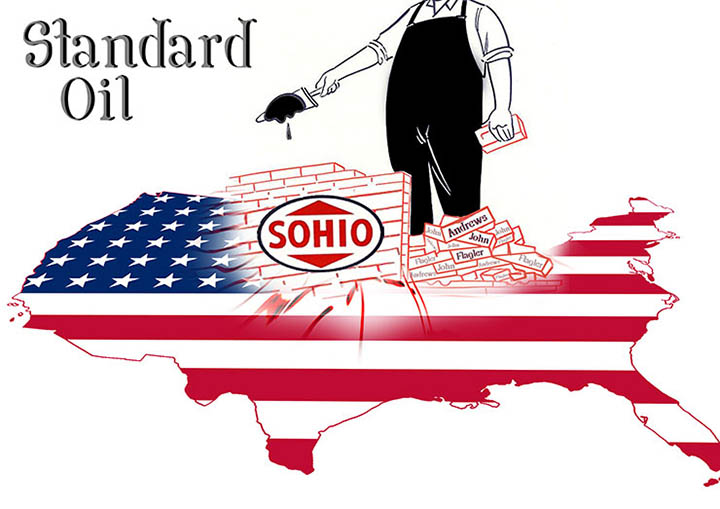

The inception of Standard Oil changed the entire oil industry, not only in America but worldwide. The company produced world’s finest kerosene and byproducts at a reasonable rate. The joint stock company was divided into 10,000 shares. Orchestrator of the cartel, John held 2,677 shares and was appointed as the President. William as the Vice-President held 1,333 shares, and Henry Flagler owned 1,833 shares as Honourable Secretary and Treasurer. The rest of the shares were divided between Samuel Andrews, Stephen Harkness and an outside investor Oliver B. Jennings.
The end of the civil war had triggered the industrial revolution in the United States of America. The improved production methods, automation and huge workforce had multiplied profits and outputs of industries. Still the situation of oil industry was nerve-racking and unpredictable as surplus production led to lower prices and profits of oil refiners. As the company purchased old crude oil at lower prices, and sold refined oil at higher prices, the company now found itself in trouble as the products were unsalable, due to the availability of cheap products in the market. With Flagler on his side, John formulated plans to outdo their competitors. They shared the same enthusiasm of numbers and accounting books. Within a small span of time, they hired men who made their small company into a giant corporation of the world.
By 1870, Standard Oil had earned a reputation in the market, but John realized he had far more important role to play in the industry. The swashbuckling businessmen in the oil sector were the biggest threat to the company’s prosperity. John knew their elimination was requisite, hence together with Flagler they formulated a plan and dangled a carrot in front of the railroad companies, who transported crude oil and refined oil for the all the companies in Cleveland. Under this secret alliance with New York Central they received reasonable rates for transportation. On the other hand, competitor refiners were charged high prices for the same service. Not only that, for supplying more barrels through their network, Standard Oil also received 75% rebate from the company and their subsidiaries. The company also received commission every time the competitor used New York Central Railroad. These secret dealings were never documented on paper and every transaction was verbal. This was not illegal but it dangerously flirted with the business ethics of laissez-faire and sportsmanship. On his path of irregularities, Devil-Bill was John’s dark passenger; he knew he was breaking a few rules but he covered his tracks tactfully.
With no government body to monitor around, the company now enjoyed rebates, commissions and preferential benefits from the railroads. In 1871, Standard Oil soon formed an alliance with Lake Shore Railroad, which sky rocketed company’s profits and production. The same year his wife gave birth to their second daughter Alta on April 12.

In 1871, Standard Oil once again got into a secret alliance with railroad owners of Pennsylvania and New York Central, which gave them an edge over other refiners. A phantom company called Southern Improvement Company (SIC) was formed with 2000 shares, out of which John owned 900 shares. According to this treaty the railroads hiked their transportation charges for other refiners but the companies under SIC received a 40% rebate on their transport, plus an additional 40% every time the competitor used the railroad services. This added woes to small refiners who went bust within a brief period of time.
By 1872, Standard Oil clandestine business operation and richly ironical deals were darker than the crude oil. The company hired executives to do the dirty job of bribing and threatening the refiners who couldn’t sustain rising transportation costs. Left with no choice, the refiners sold their business to Standard Oil at a small price.
Thanks to shady ventures and political nexus, the company piled a strong cash reserve. However, small refineries were still the predominating threat for Standard Oil. The itch to become indisputable lord of the industry led to rampant acquisitions and hostile takeover of small refineries. The period was considered as the darkest chapter of oil industry. Those who were victimized by Standard Oil hostility called it the ‘Cleveland Massacre’. The shadowy trading of SIC could not last long but the damage was already done. Local newspaper dubbed John D. Rockefeller as an Anaconda, which had gripped the entire oil industry. A protest broke out when the conspiracy behind the SIC came to light. The members of SIC were in a constant threat as the situation became violent day by day. Tension rose when the media jumped in to cover the whole story and investigate the cabal. A prominent writer ‘Ida Tarbell’ came out with a series of stories of Standard Oil malpractices and their breach of business ethics. Many allegations were made against John D. Rockefeller, but he maintained his sang-froid and gave no justification to press reporters. He even received a death threat and carried a handgun for his personal safety. Policemen guarded his home and office all the time.
John’s confidence and early bourgeois lessons played a crucial role in the success of Standard Oil. He believed that his ideas of doing business were not wrong as they were entrusted by god himself. He continued his crusade in midst of the conspiracy and within two months, the Standard Oil acquired 22 oil refineries of 26 in Cleveland. The executives [read executioners] of Standard Oil gave three options to competing refiners –
A) Sell your business to us.
B) Join Standard Oil and enjoy the preferential benefits or
C) Go bankrupt!
Those who held their ground were quietly wiped out. The ones who joined hands with Standard Oil, sold their soul to the devil and the refiners who traded their business turned out to be the biggest losers. John paid very little for their assets, or would offer original base construction cost. He gave minuscule goodwill, depending on refineries clientele and reputation in the market. The owners often felt being exploited, to which John justified with depreciation formula.
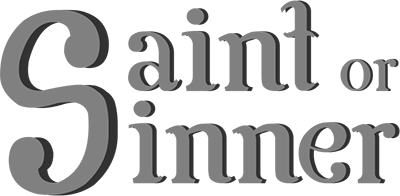
Amongst all this upheaval, happiness knocked on the Rockefeller abode when Laura gave birth to their third daughter named Edith on 31st August, 1872. As a father John was very affectionate, but his parenting methods were slightly odd from others. The children were homeschooled and cut off from any outside negative influence. The home was not dull with heavy puritan lessons; instead it was lively and cheerful as John would play blind man's bluff with his children. He would take them to swim and indulge in skipping ropes. Ice skating in winters and even riding bicycles with his children around the woods was one of his preferred pass times. John’s empty childhood made him more juvenile around his kids. He seldom scolded or spoke harshly to his children. He loved telling fairy tales and performing stunts at the dinner table by balancing china clay plates on his nose. John ensured that his children never knew about their father's enormous wealth and hence raised them in an ordinary fashion. Sharing and curbing desires were taught to children from early on. The kids knew nothing about the world outside their property, except for Baptist Church, which they attended on Sunday. John rediscovered his lost childhood through his kids. As John played a role of cheerful father, Laura was bestowed with maintaining discipline. Every weekend the kids gathered in the living area and confessed their sinful thoughts and actions, which withstood Baptist beliefs. John’s methods of teaching valuable lessons were slightly genial then his wife, he would play games, which taught his children punctuality and thrift. He gave them allowance based on their weekly chores such as sharpening pencils, cleaning windowpanes, catching bugs etc. The children from beginning were asked to maintain ledgers of their personal allowances and learnt about donating money to the needy and for religious causes.
On work front John’s critics now called him a hypocrite for trampling competitors ruthlessly and attending church for salvation. His business ethics and Baptist beliefs were highly questionable at the time when newspapers exposed Standard Oil’s soiled tactics. Some critics were brave enough to state that John lived two different lives. To him the critics were similar to pagan’s who didn’t believe in high spirits and acts of god. John considered himself as the rescuer on a mission to pull out the oil industry from its misery. The brouhaha continued as he festinated his divide and conquer policy in Cleveland oil regions.
With ever-increasing empire John wanted his eyes and ears beyond the cushy boardrooms. He hired scoundrels and beguilers like John Archbold (an American capitalist and one of the United States' earliest oil refiners) who could talk or trick their way out of any sticky situations. He dealt with ignorant oil drillers and refiners who regarded Standard Oil as a brassy business unit. Shadowy business operations, pool of talent and vast reserve of cash put Standard Oil on the map of global oil business. Every year the company produced 1 million refined oil barrels earning $1 profit on each barrel.
With passage of time John D. Rockefeller, sitting on gold mine, grew secretive and paranoid. He discouraged unfamiliar faces in and around the refinery. Whenever Standard Oil absorbed any company, he retained the owners as managers for smooth business operations. A strict guideline was given to new partners that their collaboration with Standard Oil had to be regarded as a closely guarded secret. They were urged to retain their old stationery and to keep a secret ledger for accounts. This way Standard Oil secretly traded, or bid for government contracts under the façade of a smaller company. By default no outside company could hold stakes in Standard Oil. If any of its existing shareholders were to give up their share, John would happily come forward to buy them. John warned his newly joined partners to avoid the unnecessary parade of their wealth or status. The shareholders were barred to ventilate the subject of Standard Oil. The policy was strictly followed; any of its employees found flaunting their assets, were fired or their contracts were terminated.
John Rockefeller added a new set of feathers in his hat by acquiring two biggest rival companies of Standard Oil. Philadelphia and Pittsburg based oil refineries were the biggest obstacle of Standard Oil success. John arranged a secret meeting with William G Warden and Charles Lockhart, the oil barons of Philadelphia and Pittsburg. The meeting went on for hours, where John put forward the possibility of two giant companies merging into Standard Oil. Initially the owners were skeptical about John’s proposal, and just then, John played his trump card by allowing the owners to look into his financial books. The Standard Oil ledger shocked both the refiners. The profits that the Standard Oil was making, was way more than its counterparts, and John could even sell at half the price and still earn more than the two rival corporations.
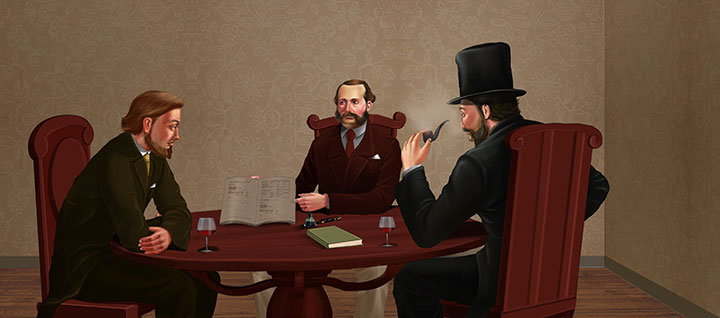
The trick of substantial profit lay in rebates, commissions, lower interest rates from banks, secured tank cars and technical expertise. The giants agreed to the merger in return of Standard Oil stocks and the proceedings of the deal were conducted in total secrecy.
It was not only John who was out on a shopping spree, his younger brother William also convinced a large oil refinery ‘Charles Pitt and Company’ to merge with Standard Oil, as they enjoyed preferential benefits from railroads, banks, insurance companies and politicians. Good news kept pouring in for John who now became a proud father once again of a son on 29th January, 1874. The child was named John D. Rockefeller, Jr.
In 1875, John and his associates formed ‘Acme Oil Company’, a front organization that looked after [hostile] takeovers of oil refineries under John Archbold’s leadership. Within a year, Archbold’s roughneck methods enabled John in acquiring twenty-seven refineries in different parts of the country. With further acquisitions, the Standard Oil became world’s largest oil refinery and monopolized global kerosene market.
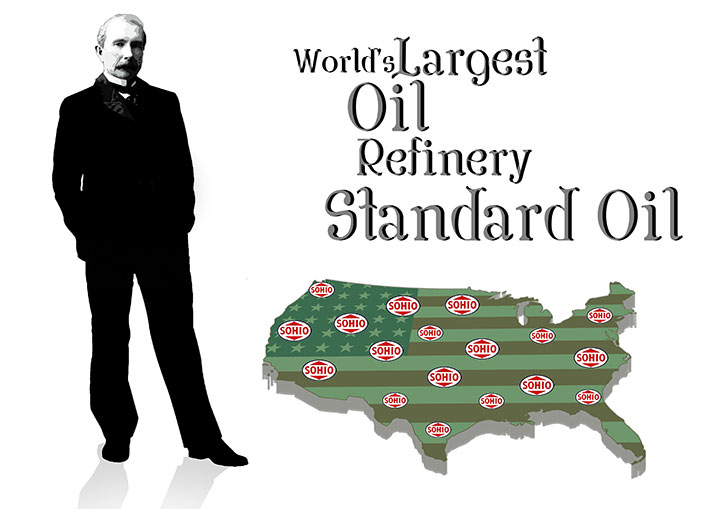
Exercising his prowess, John turned his attention to the transportation and logistics aspects of the business. He offered lucrative deal to railroads that were beneficial to both the parties. His company invested largely in developing new oil tank cars which ensured fire safety and eliminated leakages. This way the company controlled their logistics and also blocked their competitors supply. The icing on the cake was that due to John’s investments in railroad business, their supplies were transported virtually free. John realized that in the long run, railways were expensive affairs and they wanted a cheaper substitute. This is where the pipelines came into the picture and the company started building pipelines along with railway tracks to boost their oil production.

By 1875, Standard Oil had become the world’s largest refinery; the company sold millions of gallons of crude oil around the world. Apart from selling world’s finest kerosene, the company also supplied Naphtha and other byproducts such as Paraffin wax (used in chewing gum). The residue oil was sold as a lubricant for railways and machinery. The company also manufactured candles, dyes, paints, industrial acids, tar and asphalt.
Standard Oil had soared high enough to walk with the gods, no one could dare to rattle the giant. From the outset the company was impenetrable but John was worried about the threats, which loomed inside his realm. Some of the co-founders like Samuel Andrews were unhappy with John’s borrowing escapades from banks, against the company’s shares. John tried to reason with his partner by evincing his future plans which hardheaded Andrews failed to understand. Andrews no longer wished to be a part of the company which he had been a co-founder of. Within 24 hours John arranged $100,000 to buy back his part of shares and sold it to an affluent businessman for $300,000. Thumping his iron hand John turned his setback into an opportunity.
In 1878, Standard Oil mastered the production of magnanimous oil storage tanks, elongated pipelines and paramount refineries. However, huge reserves of oil discovery had led to reckless drilling and refining which disturbed the equilibrium once again and the prices dropped significantly. This chewed into the company’s profit. Enraged John had no choice but to twist the arm of his rivals once and for all. Having a huge interest in railroads and owning largest web of pipelines, John refused to supply oil of rival companies on his network. With overproduction of oil the competing refineries and drillers were running short of storage facilities. Sighting no other option they approached Standard Oil to lease their storage tanks on a temporary basis, which they straight away denied, stating that they don’t have a vacant storage facility. It was an utter lie, but Standard Oil offered to buy their produce at 20% below the market price. Though cunningly, Standard Oil successfully managed to restore the balance in the oil industry. Some refiners agreed to self-implored exploitation whereas some oil producers were angry and even vandalized Standard Oil property in rage.
John, once again, engaged in a buying spree and purchased ‘The Empire Oil’ assets [a rival company] for $3.4 million. With this acquisition Standard Oil trust became the largest oil producing entity in America with 90% ownership of refinery, pipelines and railroads in the country.
Many small companies fell prey to the giant; however, one dwarf entity named ‘Tidewater’ with a small network of pipelines rattled the hornets’ nest. Boasting its unshakeable throne, the bandits of John D. Rockefeller persuaded, threatened, and terrorized Tidewater to abandon its plan to set a new web of pipelines. Well aware of the aftermath, the owner of Tidewater stood his ground facing the colossus adversary. Standard Oil in its quest to defeat the diminutive company, purchased lands on which the rival wished to lay its pipeline. They even threatened the railroads to banish Tidewater for laying its network along its route. Rumours too were spread among the villagers, that Tidewater pipelines would spoil their yield rich land, as they leaked profusely. Many officials for the first time were bribed by the Standard Oil executives to stop Tidewater in legal tangles. Undeterred by the nadir, Tidewater unconventionally trod the rocky mountain ranges and successfully laid their network. For the first time in his life the Titan was defeated.
By the turn of the decade Standard Oil had garnered intense adverse criticism for their clandestine business practices. In 1879 the court of Pennsylvania summoned Standard Oil head honchos for their corporate irregularities in the system. The trial took place against Standard Oil’s “Immediate Shipment Controversy” and “Refusal of storage” policy. Found at fault the court indicted Standard Oil supreme John D. Rockefeller and his executives Flagler, William and Archbold.
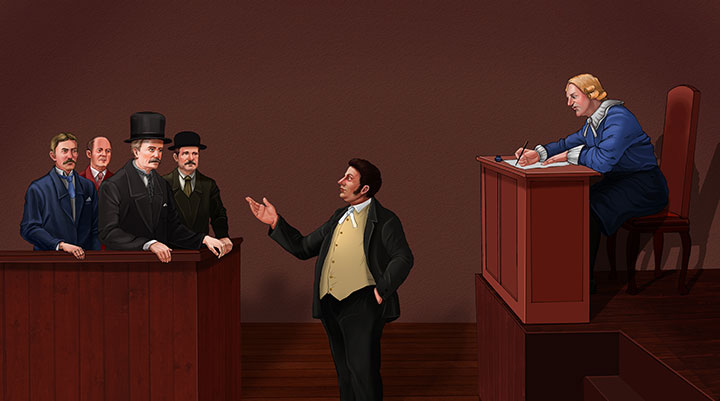
The so called invincible were now charged with conspiracy to monopolize the oil business, extorting railroad rebates and manipulating prices to cripple the rivals. As the cartel resided outside the legal jurisdiction they couldn’t be arrested. John, who made his base in New York, made arrangements with politicos so that he would not be extradited from the city for future court trials. John had made some great acquaintances in both high and low places in the system in past years.
Reaping benefits for years now, Standard Oil trust decided to placate the producers and oil refineries by cutting a favourable deal. By the Christmas of 1879, John personally met producers and uplifted his Immediate Shipment policy. He agreed to transport oil of rival companies on his railway and pipeline network at reasonable rates, only if they took back their cases filed against him and his company. The decision was nothing short than a Christmas present for the victimized oil drillers and refiners.
Subsiding his legal woes, the cabal realized that over the years Standard Oil’s image had taken a huge blow and now, public’s angst against the company was to be extinguished at any cost. An effective public relations campaign was the need of the hour. John invested in Cleveland newspapers ‘Herald’ and ‘Leader’. Both received $5000 and $10,000 based on their readership and reach into the community. The newspapers soon carried out articles portraying the company in a positive light. The psychological warfare paid off as hoi polloi with time was ready to forgive and forget.
John D. Rockefeller and Byron Benson the brave heart CEO of Tidewater buried their hatchets and joined hands. Standard Oil trust invested heavily in Tidewaters, which gave them 70% of the ownership and subsequently the control over its operations. Forgive your enemy but never forget their name was John’s motto.
The 40-year-old John D. Rockefeller was now among one of the 20 richest men in America. But by his own standards he was just warming up. The family shifted to New York and lived in affluent property. The millionaire still came in his old horse carriage and owned only a few pairs of suits. He loved ice skating and riding horses with his children in New York surprising pedestrians. The chief of oil industry avoided attending clubs and parties where virtuoso of American Industry would hob-knob with cigars and a glass of champagne in hand.
In 1885 the company moved its entire operation to New York at 26 Broadway, the most popular business address in the city of New York. In this nameless building John and his trusted men formulated the plans of dominance of the oil industry due to its shady and mysterious business operations in oil, railroads, banks and other businesses. The reporters dubbed 26 Broadway as the “cave of pirates…a den of cutthroats of commerce.”
Behind the fortress John D. Rockefeller managed and motivated his diverse associates. The Standard Oil trust was a body of 20 different individual companies who came together to form a synergy. Instead of shares the executives held Trust Certificates based on their investment or holdings in the cartel. At the meetings John promoted “we” and not “I” when he put forward his ideas for Standard Oil growth and prosperity. It would have been a mammoth task to control his diverse associates had it not been for his “art-of-dealing-people.” John D. Rockefeller is considered the greatest administrator of all time.
At the epitome of success, he never once forgotten his parental role, and ensured that all his four children received first class education. His daughters Elizabeth, Alta and Edith attended all girls’ school in New York. John D. Rockefeller,Jr. attended ‘John D. A Browning School’, a custom school built only for preferential students, who were taught subjects specially designed for millionaires.
Quite understandably, with ever-growing personal wealth John conscientiously pursued philanthropy. John supported the deprived individuals who failed to prosper and every single dollar committed to the charitable cause ensured that it did not encourage dependency. Huge donations went to the welfare of coloured women who were rescued from slavery. Education eradicates ignorance, which ultimately leads to freedom. Spelman College for Black women of America was the first step to abolish thralldom in the country.

The Philanthropist pleased with his brotherly love towards children of god refocused his attention to his prolonged goal… the World Dominance!
Standard Oil no longer gratified with their ascendency in American territory, desired to conquer the foreign oil industry. During those years the foreign markets were far more lucrative than domestic ones. In mid 1880’s, more than 70% of Standard Oil products were sold abroad. Predominantly, Europe was the biggest consumer of Standard Oil kerosene with flourishing British common wealth; the new untouched markets of India, China, Japan and Singapore were wide open.
However, growing competition in Europe chewed away Standard Oil’s business in Switzerland where Russian products dominated the market. Robert Nobel the leading arms manufacturer and oil refiner predominantly controlled Paris market. French company ‘The Paris Rothschild’ was another threat for Standard Oil in Europe. The juggernaut of American oil industry was now rubbing shoulders with its equals in the global arena. The competitors were major obstacles in John D. Rockefeller’s mission of world dominance. He devised international marketing strategies and heavily invested in French and German oil companies.
To stay ahead in the game the company built a gigantic oil vessel that shipped one million gallons of oil in Europe and Asia. Considering the scale of the foreign market, Standard Oil strengthened their ties with Royal Dutch and Marcus Shell Transport Company. It widened Standard Oil’s global reach. Offshore business units were set up in – Singapore, Shanghai, Bombay, Calcutta, Yokohoma and Nagasaki. These foreign units were operated by local businessmen who tendered marketing and distribution of the Standard Oil kerosene. In Asia, packaging was given utmost priority; Standard Oil kerosene was packed in blue tin cans with wooden frames and the Asians used the empty can and wooden frame for multiple purpose.
By the end of the decade Standard Oil kerosene was widely used to lit hundred and thousands of homes, restaurants, mills and offices across Asia, Europe and America.

The colossal empire of John D. Rockefeller comprised 100,000 employees, 20,000 oil wells, 4000 miles of pipelines across America and 5000 Standard Oil Tank cars. The company was capable of producing and supplying 50,000 barrels of refined oil to Europe daily! Marking its world dominance by exercising aggressive marketing strategies, the Standard Oil trust was the richest, feared, highly organized and admired corporate entity in the world. Unaffected by the economic forces, the company survived recessions prosperously.
The secret of Standard Oil’s success lay in the company’s bourgeoisie spending and thrift. The collusive with railroads and business shenanigan orchestrated by John D. Rockefeller himself kept the Standard Oil afloat. By cutting loose the middleman from their distribution line, the company saved 3-5% of its revenues. The executives forced wholesalers and stores to sell only their products in order to eliminate rival products off the market which the latter refused blatantly. Consequently, the Standard Oil set up a store close by and directly sold their products to consumers at lower prices. To carry out Standard Oil’s dirty work John hired top notch corporate scoundrels who tried every trick in the book to outdo the government and the rivals. Bidding for government contracts were carried out through dummy corporations, shielded with so many layers of ownership that it made virtually impossible to trail back to Standard Oil.
Arrogantly, the company adopted a zero tolerance policy for infiltrating small companies, who with their reckless business adventures marred the highly organized eco-system of the oil industry. If by any chance the small business units managed to penetrate, they were dealt with Standard Oil’s methods of persuasion, threat and terror! The ruffianism not only widened their local market but also prevented adulteration of kerosene which was rampant under local middlemen, jobbers, shop keepers and distributors. This adulteration made kerosene highly unsafe to burn. Few reports surfaced regarding death caused due to fire, but the company soon took the matter under control.
No matter how conniving Standard Oil’s methods appeared to be, the real beneficiaries were the customers. Standard Oil produced kerosene so efficiently that they sold the product high enough within consumers reach but low enough that their rivals couldn’t afford to sell. One day making her way in, an angry woman barged into John D. Rockefeller’s cabin and complained about their inferior quality kerosene. After carefully hearing her trouble, John took her to the lab and tested her sample, which turned out to be adulterated. With utmost generosity he gifted a gallon of fresh Standard Oil kerosene. The company was devoted to the consumers and saw to it that every single customer was satisfied.

John the puppet master of oil industry reached high places due to his hard work, persistent efforts and fetish for secrecy. Considering his role in the company, John D. Rockefeller never met strangers or any person he thought of being a conspirator. He created an atmosphere of secrecy at 26 Broadway. The elusive figure wonderfully depicted an impenetrable image of himself in the presence of his counterparts. A man of few words, John D. Rockefeller carefully chose his words in meeting and correspondence. He habitually avoided using names, figures and specifications in his correspondence in fear that it might be intercepted and used against him in the court of law. Call it a paranoia or over-cautiousness but it rightfully protected the tycoon from his enemies.
By 1880’s a new nightmare kept top honchos of Standard Oil awake at night. Some industry speculators predicted that the oil reserves of Pennsylvania and neighbouring fields were fast drying up. A panic spread across the whole industry. Sitting on top of the food chain John D. Rockefeller was advised by his partners and bankers to exit the oil business and enter a new stable venture. Very quietly the tycoon heard the hue and cry, once the noise was settled he rose up and pointing towards the sky said, “The lord will provide!”
It was apparent that many in the oil business wondered why Standard Oil ventured into drilling. But in reality oil drilling was always on John’s mind, and he was waiting for a favourable moment. John jumped into the drilling business in early 1880’s by controlling the terra-firma, and mastered the entire cycle of oil product. Over the years the company ventured into oil drilling and established the derricks across the regions of Pennsylvania. Unfortunately, the prophecy of speculators came true when the wells of Pennsylvania dried up. The company considered acquiring oil regions of Russia but feared tough competition from Russian oil barons.
Very soon new oil reserves were discovered in the regions of Lima, Indiana. However, the quality of the crude oil was inferior to its predecessor, and enriched with sulfur, the oil eroded refinery pipelines and machinery. It also contained less properties of kerosene. There were very few takers for the Lima oil in the market, as it emitted foul odour. Some marketers named it the “skunk oil” as the consumers avoided using the foul odour kerosene. It sold less compared to the Pennsylvania oil. Considering the situation at hand, the board decided to abolish the production of Lima oil, as the market blackballed the product due to its inferior state. Realizing its bad-investment the company decided to leave the Ohio-Lima oil fields, but John objected the decision as he could foresee the potential of the inferior product, which his executives failed to see. Known for taking huge risks, John wished to continue the venture and offered his personal capital [$ 3 million] for the project. Having utmost faith in their leader, the partners decided to continue their venture. New pipelines and tank cars were built for Lima oil. John hired a German chemist Herman Frasch to devise a method to utilize the oil by removing its bad odour.
By 1888 the price per barrel of Lima oil was dropped to 15 cents, but John trusted his instincts and chemists of Standard Oil. Finally, on 13th October, 1888, Standard Oil’s stars lined up, Herman Frasch came in to see John and informed that his team had successfully eliminated the foul odour of Lima oil. Within 2 years of the success, Standard Oil gained control of Lima oil fields.
In 1889 the political backlash against Standard Oil again took momentum, when David K Watson filed a lawsuit against John D. Rockefeller. Charges of monopoly, SIC scandal was made against John D. Rockefeller. During the court trial John revealed the details of Standard Oil management, which till date were highly confidential. The company had 700 shareholders and the trust had interest in 41 companies. He also gave an account of his 111 rival refiners and lengthy details of their Russian Oil competition. To his prosecutor’s surprise, John D. Rockefeller seemed prepared, before facing every challenging question, as if a sixth sense had read the prosecutor’s mind. Finding him guilty of charges, ‘Sherman Antitrust Bill’ was passed, under which the rebates were abolished. The court concluded that Standard Oil was not a giant firm but a federation of 20 independent companies. Under the Sherman act Standard Oil had no right of monopolizing the oil industry and was ordered to dissolve the trust.
In simple words, the court ruled that the trust originated illegal monopoly and ordered it to be broken up into 34 new companies. In 1892, abiding court orders, Standard Oil asked its member to return their trust certificate in exchange of shares. At the time of break up, John held 256,854 of 972,500 outstanding shares. In the aftermath, his control over the oil industry was somewhat reduced but over the next ten years it led to his prosperity, as the breakup proved immensely profitable for him. The combined net worth of the companies rose fivefold and John D. Rockefeller’s personal wealth jumped to an astounding $900,000,000!
The 63 year old billionaire suddenly retired from Standard Oil but he still held the position of a president as a number of cases were pending against the company and no executive was ready to be in the line of fire.

In the year 1893, America once again witnessed economic crisis.
Railroad companies like Erie and Northern Pacific failed to sustain their business and rising debts. The creditors hounding railroad proprietors made it evidently clear that the company was no longer solvent. The wretched banks who unblushingly fed the unorganized railroads with massive loans now were in a state of eternal defunctness. Fearing personal loss, many customers in this economic hysteria pulled out their money from their private banks. Soon a tidal wave of fear stricken individuals landed at a threshold of private banks and withdrew their savings. Within few hours, an entire banking system collapsed. The rising rumours led to the downfall of many illustrious banks and railroad. The misery was mirrored at Wall Street as the stock market crashed which led to massive loss of wealth and demise of healthy business units. Unemployment and suicides spread like wild fire. Historians dubbed the incident as the “Great Depression” until a bigger one swept the American wealth in 1930.
Post Standard Oil half of the country blamed John D. Rockefeller for igniting the economic desolation while the other half coveted for his enormous wealth. Every month more than 10,000 letters came in for John D. Rockefeller begging for his money. Some were genuine while some only wanted to gratify their materialistic motives. People would bump into him on the streets asking for money, women with famished children begged for food and shelter, and aloof youngsters followed him requesting for a job at his corporation. Those were the desperate times.
In recession John D. Rockefeller’s heart wept for the ill-fated individuals at thoroughfare. Now riding the enormous wealth in his self-imposed exile, John D. Rockefeller for the coming four decades, religiously engaged in his philanthropically cause only to resurface when he was summoned by the court.
John gave back the society with both hands filled. A firm believer of good education, he gave $80 million to the University of Chicago under William Rainey Harper (one of the leading American academic leaders of the late 19th century and the early 20th century), turning a small Baptist college into a world-class institution in 1900.
Concerned by the health condition of the poor American brothers and sisters he founded the Rockefeller Institute for Medical Research in New York in 1901.
To promote education at all levels everywhere in the country, financially backed by John D. Rockefeller, the General Education Board was founded in 1903. Committed to Baptist beliefs, schools were established in southern America for the neglected children of coloured community.
John also provided financial support to such established eastern institutions as Yale, Harvard, Columbia, Brown, Bryn Mawr, Wellesley and Vassar. The Carnegie Foundation had undertaken the study for the advancement of teaching; it revolutionized the study of medicine in the United States.
John founded the Rockefeller Sanitary Commission in 1909, an organization that eventually eradicated the hookworm disease, which had long plagued rural areas of the American South. He created the Rockefeller Foundation in 1913 to continue and expand the work scope of the Sanitary Commission, which was closed in 1915. He gave nearly $250 million to the foundation, which focused on public health, medical training, and arts. It endowed John D.s Hopkins School of Hygiene and Public Health, the first of its kind.
John D. Rockefeller died of arteriosclerosis on 23rd May, 1937, two months shy of his 98th birthday, at The Casements, his home in Ormond Beach, Florida. He was buried in Lake View Cemetery in Cleveland. His son John D. Rockefeller Jr. continued his father’s philanthropy. His grandson, Nelson Rockefeller was elected vice-president of the United States of America in 1974.
“I can think of nothing less pleasurable than a life devoted to pleasure.”
- John D. Rockefeller
As one of the richest Americans, John D. Rockefeller lived a simple life; he didn’t fancy lavish carriages, jewels or any other forms of luxury. Extremely punctual and sharp in his dressing, John D. Rockefeller would reach his office sharp at 9.15 am daily. Aware of industrial espionage he carefully chose words in meetings and his business correspondence. John D. Rockefeller’s stone mask hid his true emotions; the master of disguise used his silence as a tactical edge. He glided through the corridor swiftly without making his presence felt and it was always an everlasting pursuit at the board meetings to decode his emotions. When agitated or annoyed he would revert to long silence. An avid listener, he gave his opponents enough time to put forward their thoughts. He spoke less but his words carried enormous weight. When facing criticism he embraced Big Bills “I am Deaf and Dumb” methods. Portraying a sphinx like calm, John D. Rockefeller never showed anger or sadness in front of his employees.
Learnt from his father, John D. Rockefeller mastered the art of dealing with people. His company adopted one of the finest Human Resource Policy in the corporate sector of America. At Standard Oil employees were encouraged to put forward their suggestions and complaints via letters to John himself, to which he personally responded. Thanks to the open door policy, many changes took place considering employees requests and complaints. No employee was ever dissatisfied at the company. Standard Oil not only took care of its current employees but also looked after the retired employees by paying 40% higher pension than the industry standard.
At meetings John was a restless doodler and a scribbler, at times he would be found detached from the proceedings and without warning he would catch the speaker off guard by pointing loopholes in their ideas. He inspired his managers to take initiative to catapult the organization's profits; he vested powers to the deserving candidate and held the rights to undo their ideas if they were far too complicated or impractical. John D. Rockefeller not only inspired his men in the office but would write inspirational and congratulatory letters to drillers and offshore executives. The Standard Oil scouted talents in the country and hired the right sort of people who could contribute to company’s success. He would meet his executives for lunch where he would hear them out and provide his guidance. For John D. Rockefeller, learning never stopped and he carried a small red book in which he noted suggestions for himself and his company.
John D. Rockefeller’s life and his business policies are highly debatable. His business methods were unethical but not illegal. As a writer, I do not see any negativity in Rockefeller’s modus operandi. He discovered the loop holes in the system, which ultimately helped the policymakers to plug the gaps in future. A tycoon of any stature has thousands mouths to feed, and millions of dollars of his and shareholders on the line. One wrong move and the entire empire comes down crashing like a house of cards. Many conspiracy theorists blame the Rockefellers for the country’s economic downfall and soaring corporate greed, but undoubtedly, no one in the history of Modern Business World has ever seen a Tycoon like him before or after.
Biography of John D. Rockefeller | 0 Comments >>
0 --Comments
Leave Comment.
Your email address will not be published. Required fields are marked.

